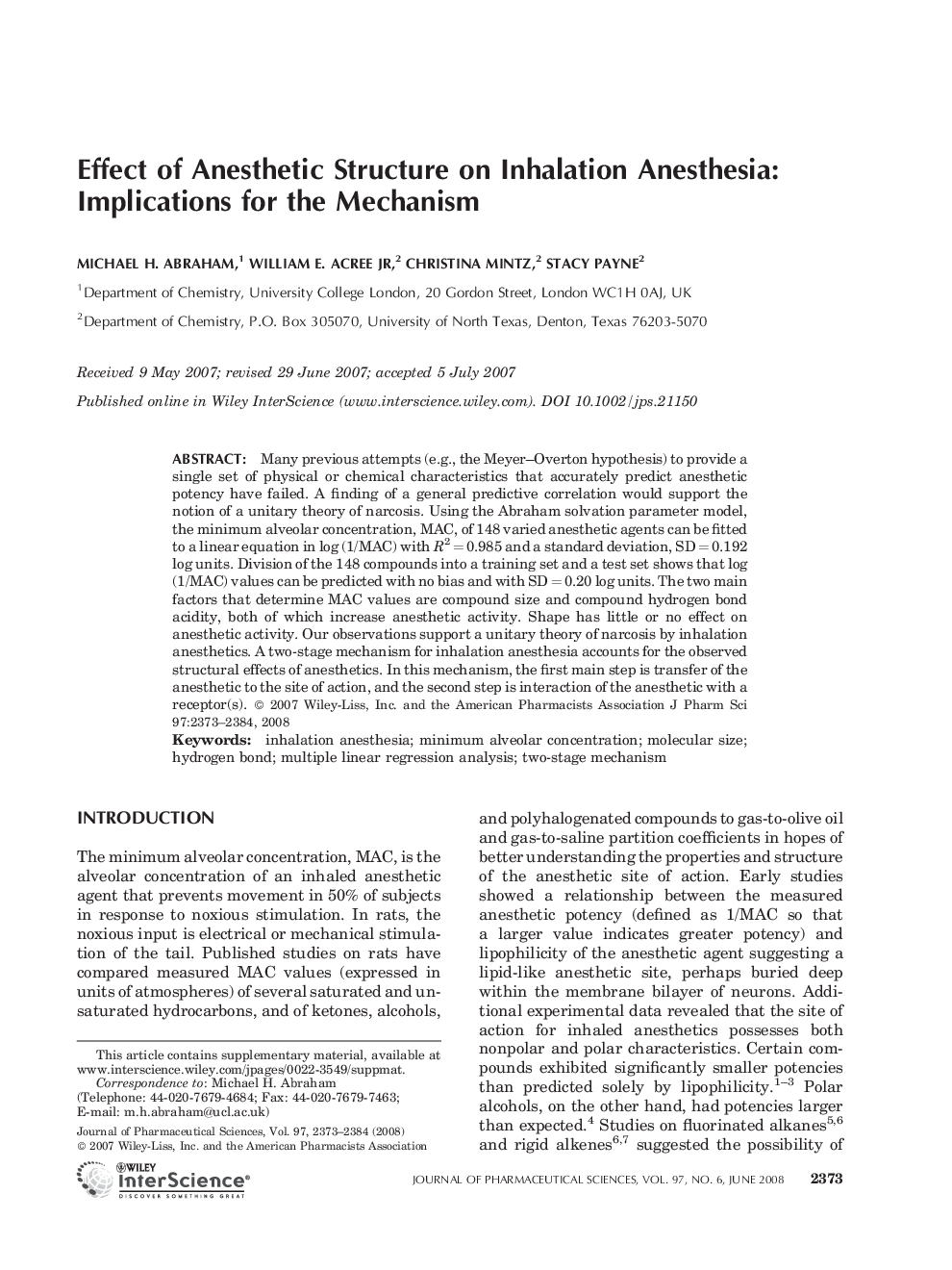| Article ID | Journal | Published Year | Pages | File Type |
|---|---|---|---|---|
| 2486890 | Journal of Pharmaceutical Sciences | 2008 | 12 Pages |
Abstract
Many previous attempts (e.g., the Meyer-Overton hypothesis) to provide a single set of physical or chemical characteristics that accurately predict anesthetic potency have failed. A finding of a general predictive correlation would support the notion of a unitary theory of narcosis. Using the Abraham solvation parameter model, the minimum alveolar concentration, MAC, of 148 varied anesthetic agents can be fitted to a linear equation in log (1/MAC) with R2Â =Â 0.985 and a standard deviation, SDÂ =Â 0.192 log units. Division of the 148 compounds into a training set and a test set shows that log (1/MAC) values can be predicted with no bias and with SDÂ =Â 0.20 log units. The two main factors that determine MAC values are compound size and compound hydrogen bond acidity, both of which increase anesthetic activity. Shape has little or no effect on anesthetic activity. Our observations support a unitary theory of narcosis by inhalation anesthetics. A two-stage mechanism for inhalation anesthesia accounts for the observed structural effects of anesthetics. In this mechanism, the first main step is transfer of the anesthetic to the site of action, and the second step is interaction of the anesthetic with a receptor(s).
Keywords
Related Topics
Health Sciences
Pharmacology, Toxicology and Pharmaceutical Science
Drug Discovery
Authors
Michael H. Abraham, William E. Jr, Christina Mintz, Stacy Payne,
